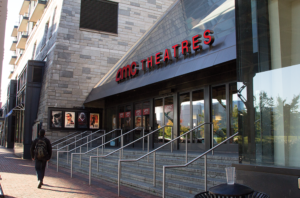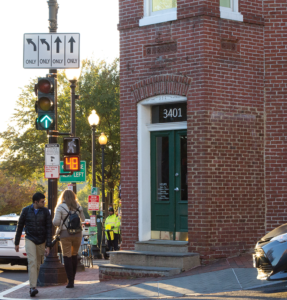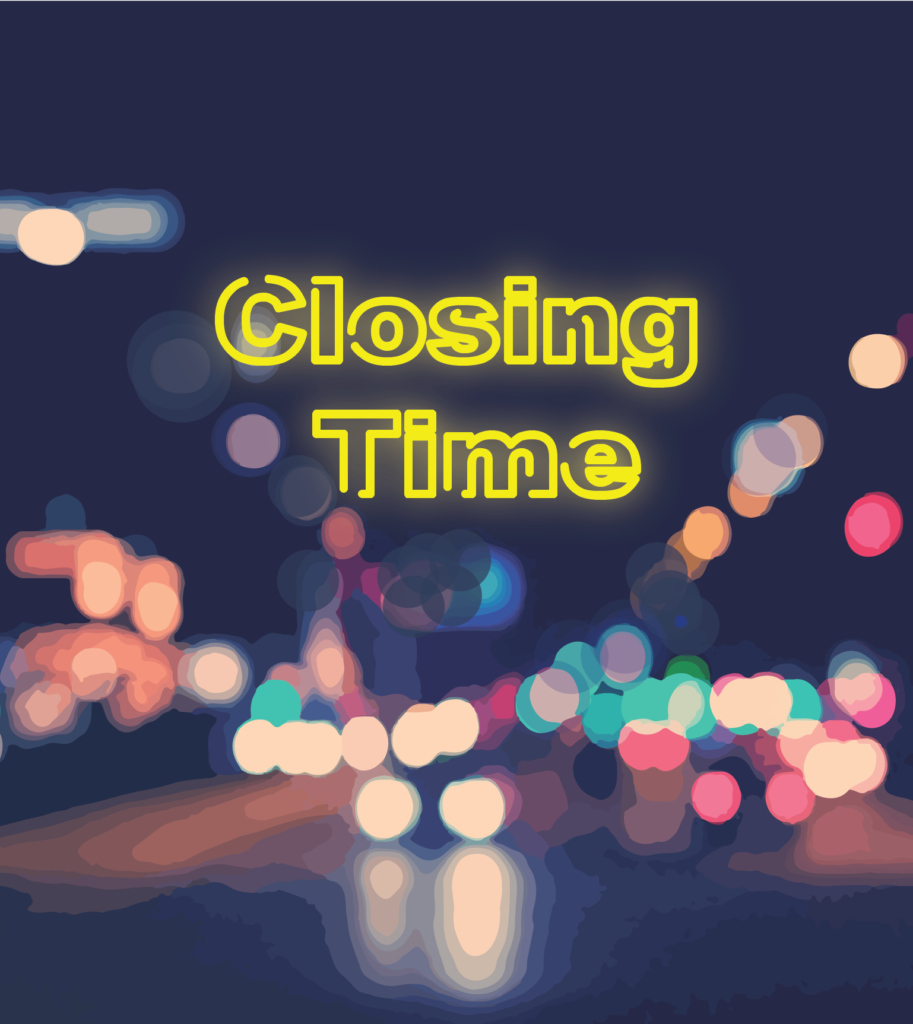Unbeknownst to most Georgetown students, just a 10-minute walk from the front gates sits a building filled with rich musical history. Although its stage has since been retired, it is here where Jimi Hendrix once played, where U2 made its American debut and where big names in rock music, from Mick Jagger to the Dire Straits, performed to cheering crowds. Here, at the Bayou nightclub, concerts had the power to transform crowds of eager students into passionate lovers of music and to uplift small musical acts into global phenomena.
Stores have come and gone and generations have dawned and passed, but nightclubs, bars and music venues have always been constants in the Georgetown neighborhood. However, increasing gentrification and rising property prices in the now-expensive neighborhood have affected the nightlife industry.
Looking back through the archives of The Washington Post and local papers and talking to longtime residents, one finds that Georgetown was once a very different neighborhood. There was a time, not long ago, whe Georgetown was home to a thriving ecosystem of clubs and bars. It was grittier, and it was less glitzy, but some residents find that it had more character.
Dance bars are largely located in downtown Washington, D.C., and Georgetown has been left with college bars and several prominent music venues. A number of these venues stand out in Georgetown’s storied history.
Down by The Bayou
Throughout the 1980s and ’ ‘90s, the most popular venue in Georgetown was the now-defunct Bayou. Situated right under the bridge on K Street, where an AMC theater now operates, the club and bar was a mecca for the musical trends of the period.

A display ad from The Washington Post in 1939 features a snapshot of the founding of a pirate-themed bar called the Pirate’s Den, founded by a man who believed he was a reincarnated pirate. As the years went by, the club changed hands, and in 1953 it was re-established as the Bayou, a jazz spot run by Michael and Bobby Tramante.
As “The Bayou: D.C.’s Killer Joint,” a documentary produced by Dave Lilling, chronicles, the Bayou has a special place in the history of music in the United States.
Music was changing rapidly, and artists needed to perform at popular but not overly expensive venues. With college students and young professionals from around the D.C.-Maryland-Virginia area eager to have a good time, all the necessary ingredients for a fantastic concert experience were present.
Even in that period, Georgetown was relatively upscale, but the Bayou learned to survive as a friendly hole-in-the-wall.
The club was nationally renowned, attracting attention from far beyond the boundaries of the DMV, reported CNN in 1999.
But in that same year, the Bayou was closed and purchased by Millennium Partners and Eastbanc Inc., with plans to build a residential complex and theater. Now, students and residents of the neighborhood unknowingly walk the halls of the historic concert venue each time they take a trip to the movies.
Bars Facing Barriers
The Bayou was not the only prominent nightlife spot to face obstacles to its survival in the neighborhood. The bar Poseurs on M Street served as a punk rock hotspot before closing down in 1989, although its regulars often reunite to celebrate old times. Poseurs is now the location of the Running

Company storefront. Rhino Bar and Pumphouse, also on M street, opened in 1998, and was a thriving college bar until it shut down in 2015 due to high rental costs. Club Monaco now occupies the space of the former student hotspot.
Fourth Edition writer Alana McGovern notes in her senior project, a sociological history of Georgetown’s bar scene, that this establishment hosted famous artists like Jimmy Buffet, Patti Smith and Carole King between 1965 and 1981.
Nightlife also used to be far more diverse, comprising many different types of bars, according to longtime D.C. resident Thomas Yates.
“There were a couple big dance bars that were mostly gay, but some straight people came. There was one leather bar,” Yates said. “There were country western bars. That stuff has all gone away.”
The presence of bars and clubs has dwindled, but they have also become more homogenous.
“In particular, in my experience in gay bars, it was kind of edgy which was an excitement in itself,” Yates said. Now, he views the gay club and bar scene as significantly smaller than it was when he was growing
up.
Popular hotspots like Tracks and Nation, both located in the Navy Yard, are among a handful of clubs that rose to prominence among D.C.’s gay community in the 1990s. Both Nation and Tracks have since closed, in 1999 and 2006, respectively. Both nightclubs’ properties were used as the construction sites for office buildings.
Remnants of Time Past
Many of the hot spots in the Georgetown bar scene have been featured in popular culture. The largely student-populated bar, Third Edition, now the site of El Centro, was even featured in the 1985 Hollywood movie “St. Elmo’s Fire,” alongside local pub The Tombs.
Although many of these bars have since closed down, Martin’s Tavern remains as a memory of time past. Established in 1933, Martin’s Tavern is a quintessential Georgetown establishment, appealing to wealthier clientele, compared with the grittier bars of the 1980s that attracted younger crowds.
The story of Georgetown’s nightlife paints a picture of a changing society and transforming communities.
“High rents force long term establishments, iconic to the Georgetown neighborhood, to relocate or close, only to be replaced with generic national clothing stores that can afford the high rents,” McGovern writes in her research.
Residents of D.C. recall the effects of rising property prices and gentrification on the neighborhood.
“Almost all of northwest D.C., west of the park, was pretty affluent … If you went east then it was less so. There were certainly pockets. There was a lot gentrification that went on,” Yates said.
Businesses like the Bayou simply could not adapt. The Bayou was founded the year before segrega

tion ended in D.C., in 1953, and closed in 1999. In this time, Georgetown’s music scene saw the rise of rock and roll as well as the emergence of other popular music genres.
But now, the neighborhood’s music and nightlife scenes have dwindled from their heights in the 1980s due to the inexorable tide of economic change and local regulations. In 1989, a liquor license moratorium in Georgetown was instituted by the D.C. Alcoholic Beverage Control Board due to complaints from residents about nightlife being disruptive. This moratorium was repealed in 2016, but during its 27 years in effect, had a stifling effect on the growth of the bar and restaurant industries.
“Georgetown’s bar and clubbing scene has moved away, due to high rents and the ban on liquor licenses,” McGovern writes.
Shifts in society have also influenced the changes the neighborhood has seen.
“When I was in my twenties, you could get away with being more drunk than you can now,” Yates said. Shifting norms about drinking and partying culture have come to form a very different type of nightlife.
Further cultural shifts over time will certainly continue to shape the way the bar and club industries operates in Georgetown, and influence the ways in which we engage with music and nightlife. But looking back, and surveying the cultural history of the area can help remind us of the richness of our community and invites us to venture again into the bright lights of the city.





















Shelley • Aug 2, 2021 at 8:08 pm
Pell Mell? Annie Oakleys? Nathan’s?
C. Mark Sublette • Aug 2, 2021 at 3:54 pm
The Saloon, at 3239 M Street, was a laid back place with nightly jazz, and a more affordable cover than Blues Alley, and always had an eclectic imported beer selection on tap which the Afghani owner went abroad personally to contract for. Signs on the wall declared the manager to be the non-existent Mr. McCoy, with shamrocks on them, and whenever some tourist patron got snarky and wanted to speak to the manager, Kami would point to the sign and tell them to see Mr. McCoy. Further, bricks on the wall were painted with long-time patrons’ names, and any argument over “that’s my seat” were quickly diffused when Kami would say “It is? “ – and then turn the bar seat around to reveal other long-time customers’ names on a brass tag on the back, thus dismissing the proprietary claim.
Many Hoya undergrads found gainful employment at The Saloon as wait staff over the years.
Kami foresaw the coming changes to the M Street retail dynamic long before others did, and bought a roofless three-story building a few doors east of Ben’s Chili Bowl in the Shaw neighborhood long before the U Street corridor became hip, renovated it, and now holds down the fort in the relocated Saloon at that location.
Tim • Aug 2, 2021 at 3:47 pm
Jimi Hendrix? I know he played the Ambassador in 67 and Merriweather in 68. When was he at the Bayou?
Richard molnar • Jul 31, 2022 at 9:29 am
Never
S B • Jan 1, 2021 at 6:24 pm
The shadows. The Apple Pie. Cellar Door. Crazy Horse. 60s & 70s.
Thatcher • Dec 31, 2020 at 9:29 pm
I grew up in Georgetown but left in ‘71. This article had nothing to do with the “History of G‘Town Nightlife” Please Write one about the ‘50’s and ‘60’s and the history of then.
Barbara Hall-Cress • Dec 31, 2020 at 5:06 pm
Sad to see that Blues Alley and The Cellar Door were not mentioned.
Leon Jester • Jan 2, 2021 at 5:51 pm
Indeed, I also was surprised.